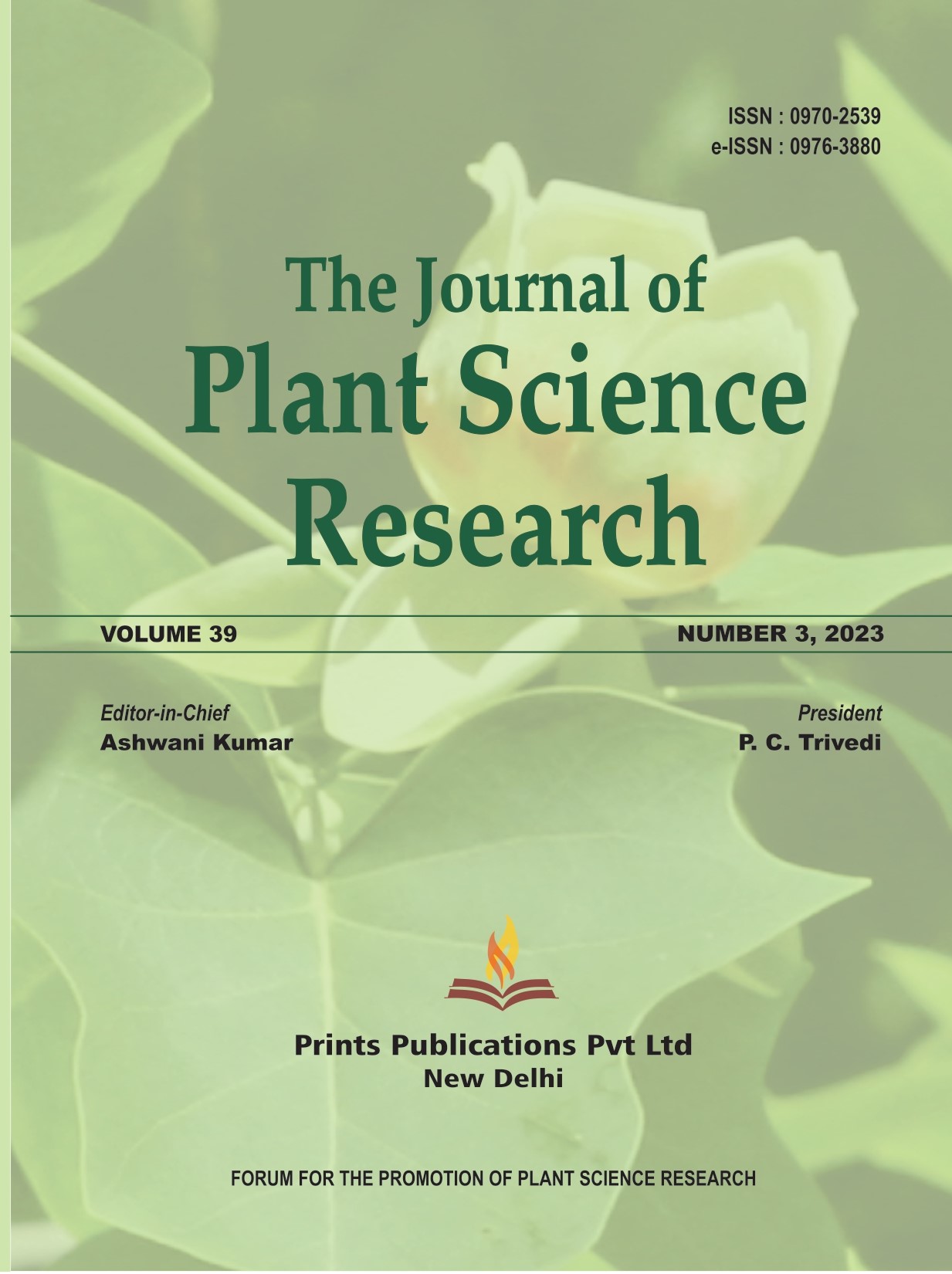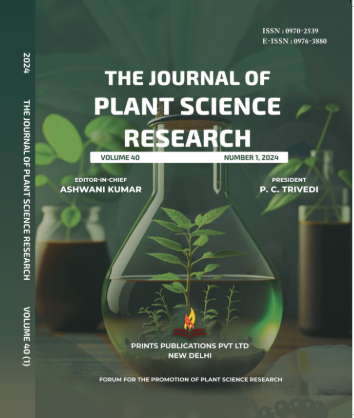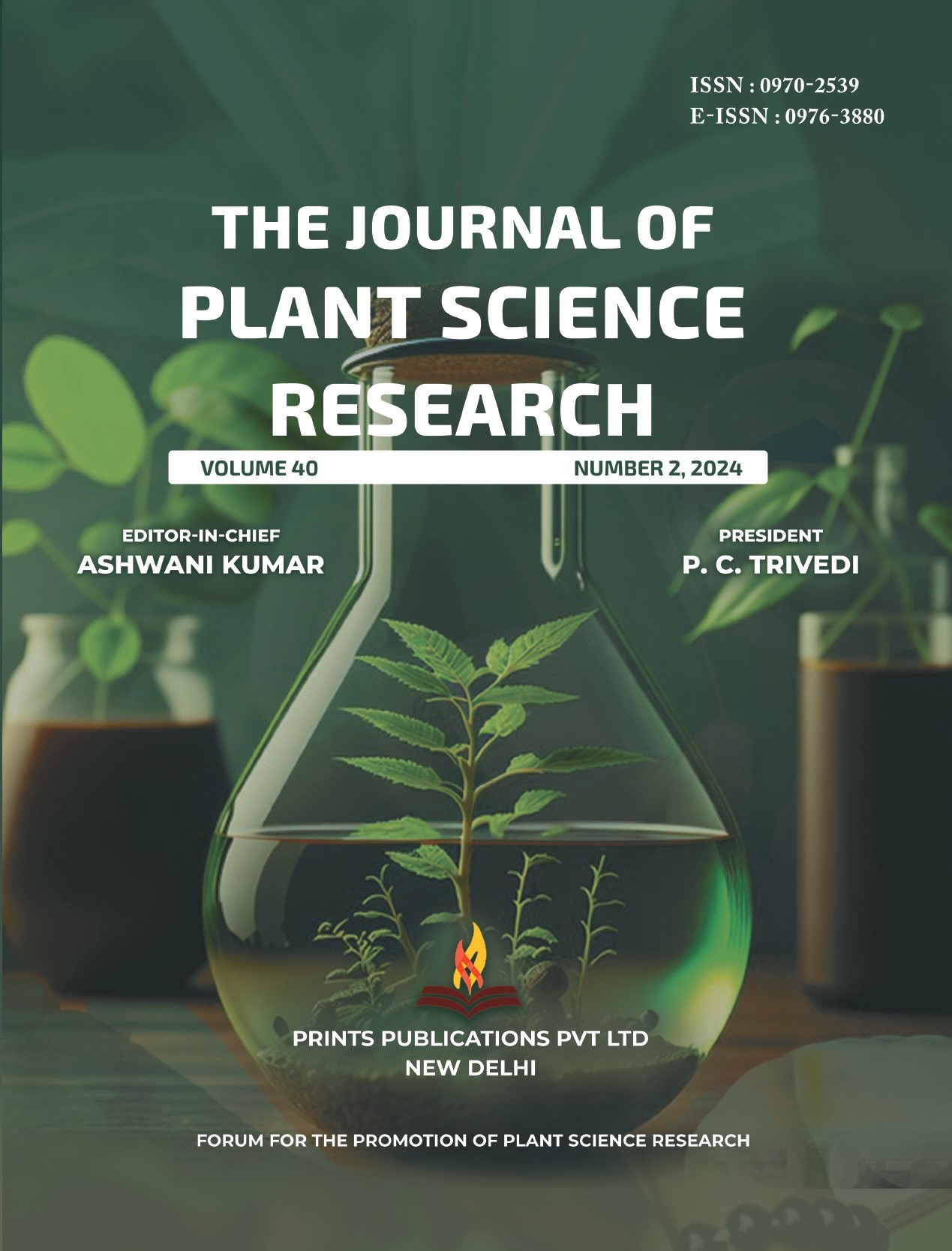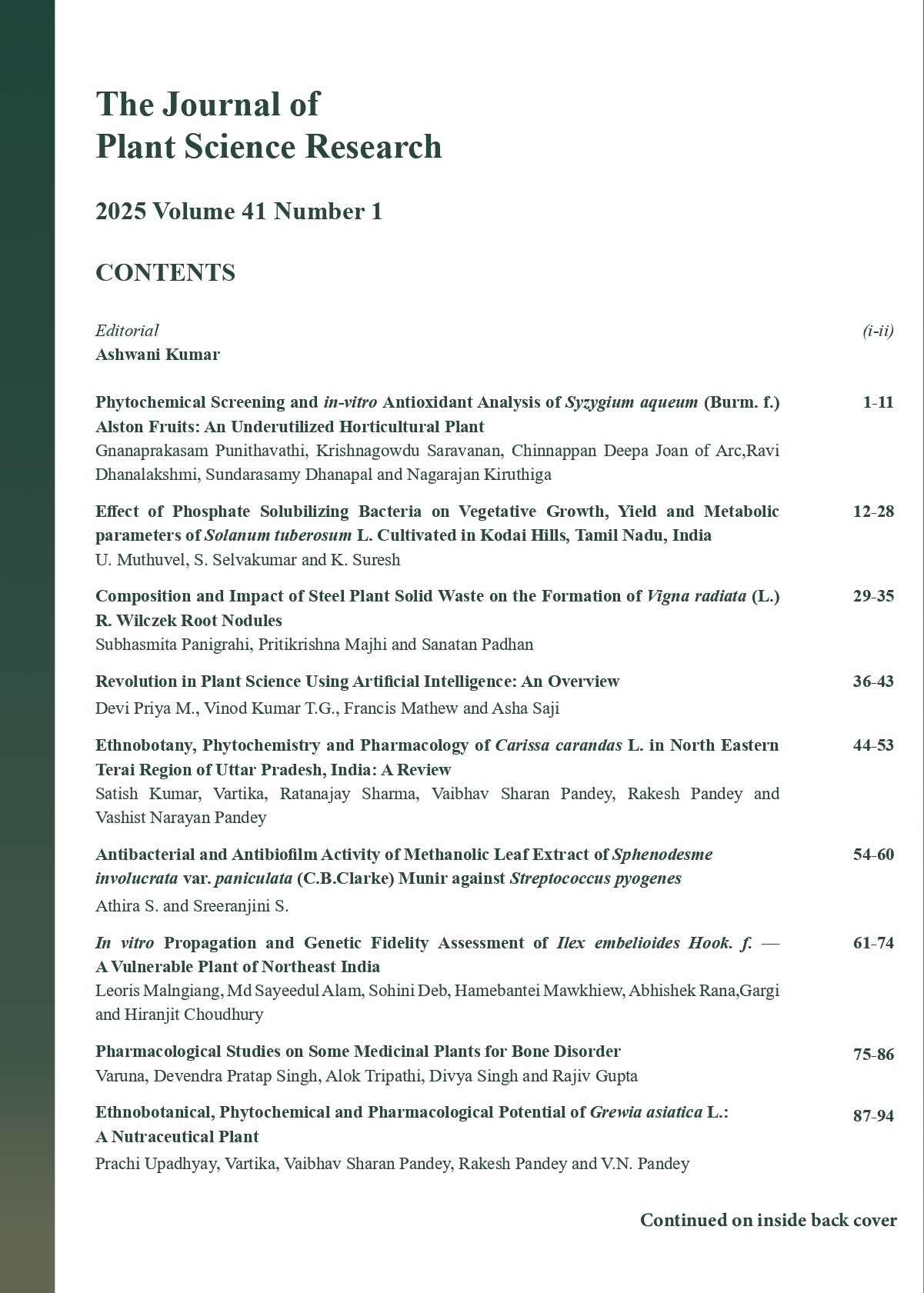The Journal of Plant Science Research - A UGC Care-Listed Journal
Published in Association with Forum For the Promotion of Plant Science Research
Current Volume: 41 (2025 )
ISSN: 0970-2539
e-ISSN: 0976-3880
Periodicity: Tri-annual
Month(s) of Publication: April, August & December
Subject: Botany
DOI: 10.32381/JPSR
Online Access is Free for Life Member
A comparative GC-MS analysis of bioactive compounds in ethyl acetate fruit extract of Phyllanthus emblica L. growing in two phyto-geographically contrasting regions of west Bengal, India
By : Chandan K Acharya, Naureen S Khan, Nithar R Madhu
Page No: 343-355
Abstract
The Phyllanthus emblica L. has an interesting combination of ingredients. Fruit that grows in several parts of West Bengal, particularly the North Bengal Hill Slope and Jhargram, was researched using an ethyl acetate-based method. The spectrums of the individual components were compared to the library of previously identified spectrums using gas chromatography-mass spectrometry, and were done so on a Factor Four TM capillary column (VF-5 ms, 30 m, 0.2 mm id, 0.25 m film thickness; Varian, Middelburg, The Netherlands). Unsaturated alcohols such as Campesterol and alkanes such as N-Hexatriacontane were discovered as phytochemical components in the Jhargram fruit sample. Phenolic substances such as 1, 3, 3-Trimethyl-1-(4’-tri methyl silyl oxy phenyl)-6-trimethylsilyloxyindane, Phytosterol, and other organic compounds such as alkanes were also found. In the North Bengal sample, the phytoconstituents identified are alkenes such as 1-cyclohexyl-1(-4-ethyl cyclo hexyl) ethane and 17-pentatriacontene. The present study also revealed that the bioactive phytoconstituents like Lanost-8-ene, Stigmast-5-en-3-ol, oleate, 1,3,3-Trimethyl-1-(2’-trimethyl silyl oxyphenyl)-6-trimethylsilyloxyindane etc. in Jhargram Sample and heterocycle like Benzo (b) naphtho (2, 3, d) furan, steroid like Olean-12-ene and alcohol like Ergosterol in the north Bengal sample has a high percentage of abundance. The discovery of these chemicals is proof that the plant’s fruits may be used to treat various medical issues, a point that can be used as an argument in support of the plant’s agricultural and industrial value.
Authors :
Chandan K Acharya : Ph D Research Scholar, Department of Life Science, Dr. C.V. Raman University, Kargi road, Kota, Bilaspur, C.G. India, State aided College Teacher, Department of Botany, Bajkul Milani Mahavidyalaya, Purba Medinipur, West Bengal, India.
Naureen S Khan : Assistant Professor, Department of Life Science, Dr. C.V. Raman University, Kargi road, Kota, Bilaspur, C.G. India
Nithar R Madhu : Associate Professor, Department of Zoology, Acharya Prafulla Chandra College, New Barrackpore, Kolkata, West Bengal, India.
DOI: https://doi.org/10.32381/JPSR.2022.38.01.37






